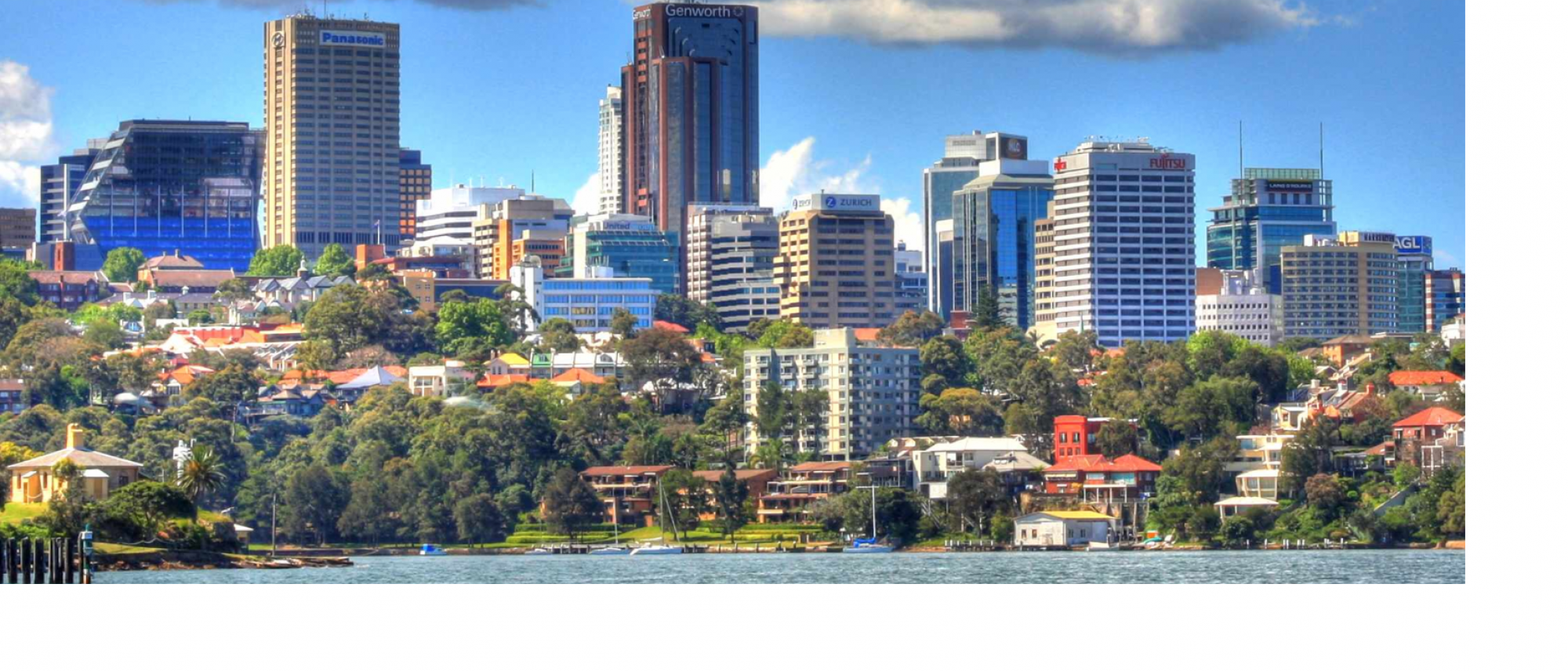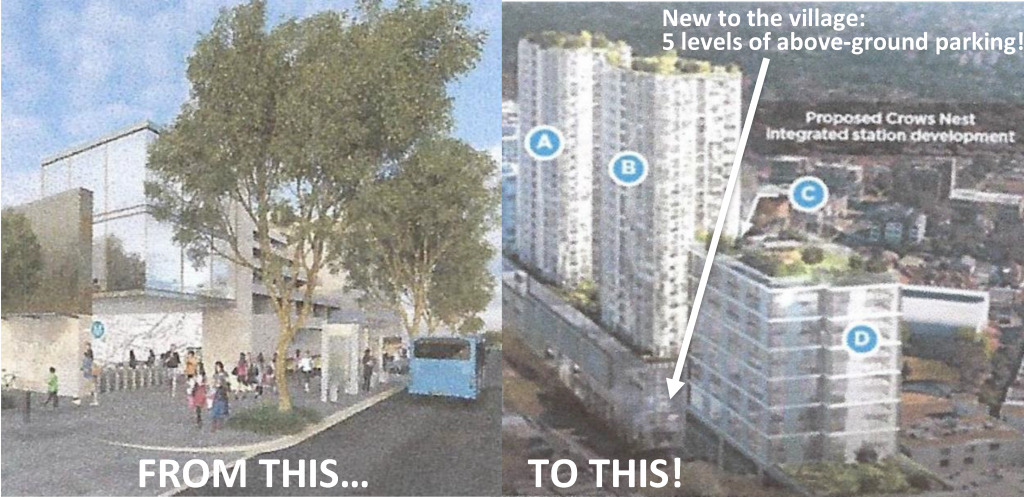Sometimes Sydney Metro is just a state infrastructure agency.
Sometimes Sydney Metro looks and behaves like a commercial developer driven entirely to maximise private gain.
So what is it?
Sydney Metro is described on its website as follows.
Sydney Metro is an operating agency owned by the NSW Government and is part of the NSW Transport cluster, operating similar to Sydney Trains.
That’s not quite right.
Sydney Metro is not like Sydney Trains.
Somewhere between the setting up of the Sydney Metro Delivery Office and the commencement (as recently as 1 July 2018) of the Transport Administration Amendment (Sydney Metro) Act 2018, there was the realisation that Sydney Metro could be much more than an infrastructure ‘operating agency’. That description seems to be deliberately out-of-date and therefore disingenuous if not intentionally misleading.
The original rendering of the Crows Nest station – scandalously still displayed on the hoarding around the site – and its sudden replacement by big buildings including two 27-storey towers – dramatically illustrates the change from a ‘delivery office’ to a full-on developer with fast-track prerogatives.
Why not make Sydney Metro an independent corporation (whether retained or sold by the state) exercising all the functions of an urban developer with a portfolio of transport and other businesses, without giving up the powers and prerogatives of a state agency?
A merchant banker would get a big bonus for an idea like that.
So here’s what this brand new Act says about Sydney Metro’s two principal objectives.
- to deliver safe and reliable metro passenger services…
- to carry out…development of land in the locality of metro stations.
Sydney Metro’s other objectives include the following.
- to be a successful business and, to that end…to maximise the net worth of the State’s investment in the metro,
- to exhibit a sense of social responsibility by having regard to the interests of the community in which it operates,
- to conduct its operations in compliance with the principles of ecologically sustainable development contained in section 6 (2) of the Protection of the Environment Administration Act 1991.
And here are the functions conferred on Sydney Metro by the Act:
- design, construct, develop and operate a metro…
- assist the relevant planning and transport authorities in the preparation of strategic and other plans for the development of land in the locality of metro stations,
- conduct any business (whether or not related to its functions) that it considers will further its objectives,
- operate other transport services, including bus services, whether or not in connection with its metro passenger services,
- build, modify, hold, manage, maintain, finance and establish transport assets,
- acquire, build, modify, hold, manage, maintain, finance and establish metro assets,
- acquire, build, modify, manage, maintain and establish transport assets… owned by another public transport agency…
- acquire any land, and develop, sell, lease or otherwise dispose of any of its land.
That is, almost anything, including taking over any existing state transport agency!
Sydney Metro is under the ultimate control and direction of the Minister for Transport, but it is clear from the Act that it is intended to operate independently. Kerry Schott as Chair of the Board is in charge (until it is sold) and the CEO is solely accountable to the Board.
That’s what the Minister will say when asked about the priorities and actions of Sydney Metro – ‘They’re a commercial entity, there’s nothing I can do about it.’
And what does Sydney Metro say?
- It intends to maximise returns from the land compulsorily acquired – including sites in North Sydney and Crows Nest that seem significantly bigger than needed for the construction and operation of the trains.
- It says on its website that it will ‘help grow the state’s economy’ and ‘help create vibrant places and communities’. Translated, that actually means ‘help grow the urban development economy’ and ‘help maximise office and residential densities at the stations’.
- Sydney Metro says that many transport organisations around the world operate in a similar way, ensuring new rail systems can be ‘integrated with the communities and places around them’. There may be such precedents, but this is different.
‘Integrated’ is a magic term that Sydney Metro deploys a lot, to give it powers and privileges other developers and agencies do not have.
‘Integrated’ is supposed to suggest that the station and the private office and apartment towers above it must both be designed at the same time, as one project.
This has remarkable benefits for Sydney Metro now that the objective of developing land in the locality of metro stations* has precedence over exhibiting a sense of social responsibility**.
*Statutorily, a principal objective ** A [secondary] objective
‘Integrated’ means that:
- the private office and apartment towers can be passed off as state significant development, avoiding the normal assessment and approval processes for this kind of development;
- approval and commitment of the private office and apartment towers becomes super urgent – there’s no time for consultation, no time to ‘integrate with the communities and places around them’, not enough time even to submit a development application before asking tenderers to spend major amounts on designing and pitching their proposals;
- in this way Sydney Metro seems to want to lock in the private office and apartment towers, even though we have been told that no construction of over station development will begin before 2020 (and in any event does not need to be completed before the trains arrive in 2024);
- we can expect the Minister to say that, sorry, the proposals are subject to commercial contracts and cannot be changed without generating massive compensation claims;
- so everything is commercial in confidence.
It might be state significant development, ‘integrated’ with a public work on public land, but sorry, we’d like to but we can’t tell you what it is, who is bidding, why it takes this form, what impacts it will have, or how it contributes to (and impairs) the surroundings.
It’s obvious, laid out in this way, that what is being attempted is an unprecedented assault by the executive government on some of the local community’s most significant public places.
Just wait for this realisation to build, and to become a wall of community opposition.
Download a pdf file of this page here.

